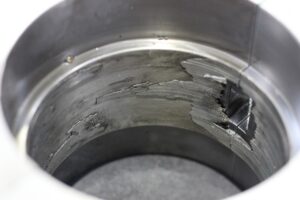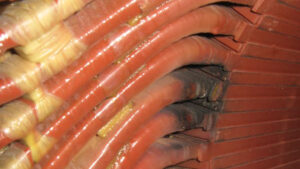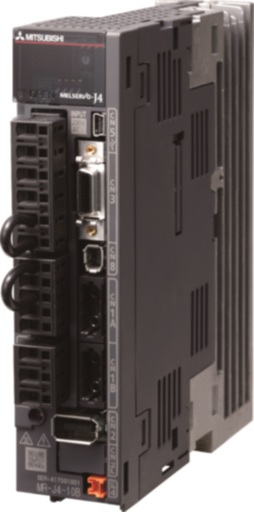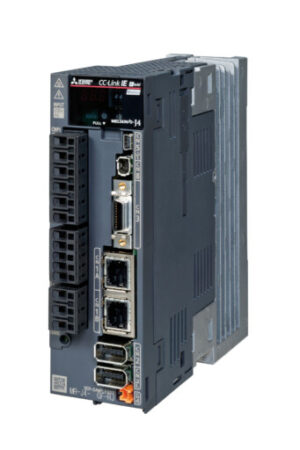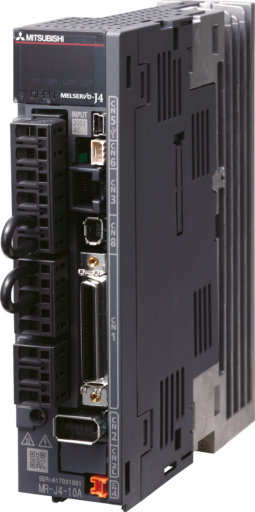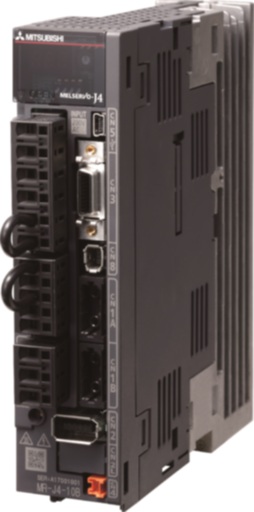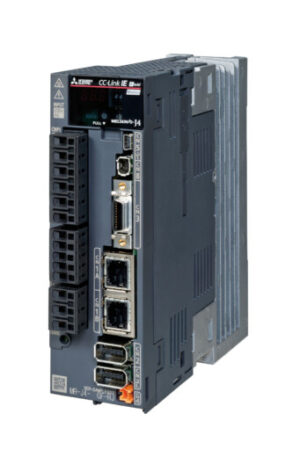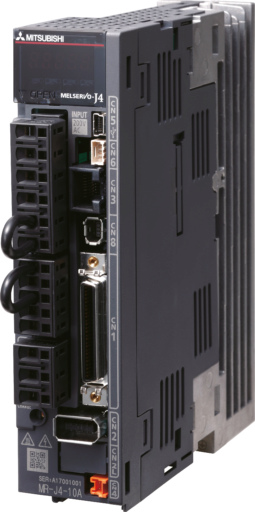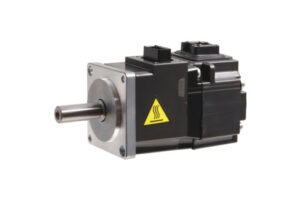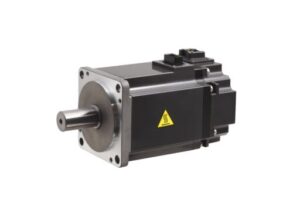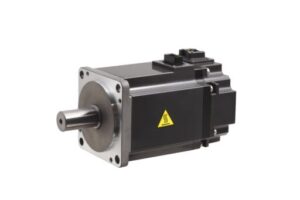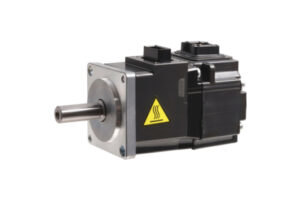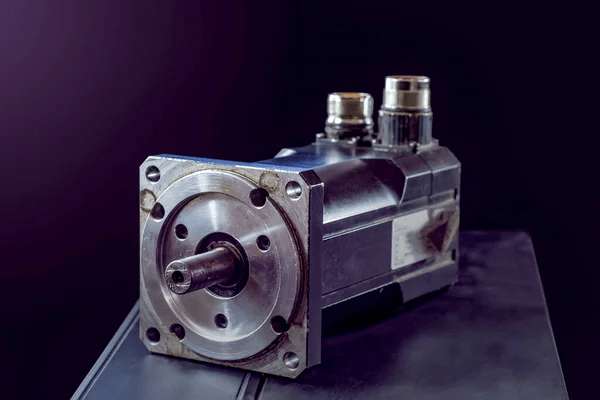
1
Understanding the Lifespan and Reliability of Servo Motors
Introduction to Servo Motors
Servo motors are vital components in industrial automation, known for their precise motion control, responsive feedback mechanisms, and ability to perform in demanding applications. Whether used in robotics, CNC machines, or packaging equipment, these motors provide accurate control over position, speed, and torque—making them indispensable for achieving optimal performance.
However, even the most advanced AC or DC servo motors are vulnerable to servo motor failure without proper care. Factors such as electrical issues, mechanical wear, and environmental conditions can degrade performance, resulting in unusual noises, erratic behaviour, or even complete failure if not addressed. Understanding the root causes of failure and implementing effective maintenance practices are key to maximizing motor lifespan and avoiding costly downtime.
Key Factors Influencing Servo Motor Longevity
Environmental Conditions
The operating environment significantly impacts the lifespan of servo motors. Exposure to extreme temperatures, excessive humidity, or dust and debris can lead to electrical faults, component failures, or insulation breakdown.
Poor ventilation or inadequate cooling systems can cause excessive heat, increasing wear on electrical components and mechanical parts.
Ambient temperatures beyond the motor’s rating may result in thermal stress or heat generation that affects performance and longevity.
Ensuring proper climate control, clean air circulation, and heat dissipation is essential for maintaining a stable operating environment.
Operational Stress
Over time, mechanical stress from demanding workloads can contribute to premature wear or servo motor damage. Common issues include:
Excessive vibration, leading to bearing failures, loose servo motor coupling, and shaft misalignment
Heavy loads or constant load operation causing strain on motor windings and mechanical components
Poor alignment of motor shafts, which results in abrasive wear and eventual physical damage
Monitoring for abnormal sounds like humming or grinding is an early indicator of potential mechanical issues. Routine visual inspections can also identify signs of wear on bearings, loose connections, or improper installation before serious damage occurs.
Electrical Issues
Many servo motor problems originate from the electrical side of the system. Voltage spikes, electrical interference, and incorrect wiring can cause:
Winding failures or bad windings
Component degradation due to current surges
Servo drive malfunctions, resulting in error codes or abnormal performance
Additionally, electrical connections that are loose or corroded often lead to erratic behavior or intermittent faults. Using proper circuit protection devices, maintaining stable power supply, and shielding from electromagnetic interference are all crucial to preventing electrical failures.
Maintenance Practices
Implementing predictive maintenance and routine inspections plays a crucial role in extending the operational lifespan of servo motors. Proactive maintenance helps detect potential issues before they escalate into costly repairs or complete failure.
Best practices include:
Monitoring feedback signals for early warning signs
Keeping motor casing clean and free of contaminants
Verifying correct installation and alignment regularly
Checking motor-mounted vibration sensors to identify early mechanical imbalances
A well-documented maintenance schedule that includes lubrication checks, electrical testing, and real-time data analysis can drastically reduce the likelihood of servo motor failure and help maintain optimal performance across all systems.
Common Failures Causes in Servo Motors
Bearing Failures
Bearing failures are among the most frequent mechanical issues in servo motors, often resulting from excessive vibration, insufficient lubrication, or contamination. These failures can lead to abnormal noises, increased mechanical wear, and even motor shaft damage if left unaddressed.
Over time, worn bearings reduce the precision of the motor’s movement, causing misalignment and placing additional strain on connected systems. Improper installation, lack of regular inspections, or exposure to harsh environmental conditions—such as moisture or dust—can accelerate this degradation.
Early symptoms include a humming sound, mechanical resonance, or fluctuating torque output. Monitoring these indicators and scheduling predictive maintenance can prevent sudden shutdowns and extend the lifespan of servo motors.
Winding Failures
Winding failures typically result from electrical issues such as overheating, voltage spikes, or short circuits. When insulation around the windings breaks down, it can lead to leakage currents, erratic motor behaviour, and even complete failure.
Common causes include:
Overloaded motors or excessive heat generation due to poor ventilation
Electrical interference or incorrect wiring
Thermal stress from operating outside optimal temperature ranges
Symptoms of winding damage may present as intermittent faults, burnt insulation smells, or performance issues during load variations. Detecting these issues early with thermal imaging or motor diagnostic tools helps avoid costly repairs and maintain optimal performance in continuous operation.
Cable Failures
Cable failures are a critical yet often overlooked cause of servo motor failure. These issues arise from mechanical fatigue, poor routing, or excessive flexing during machine cycles—especially in systems with moving arms or mobile axes.
Common problems include:
Loose electrical connections
Frayed or broken wires
Connector damage due to repetitive stress
Symptoms such as intermittent signal loss, feedback errors, or unusual servo drive error messages are often traced back to faulty cables. Regular visual inspection, strain relief implementation, and using high-flex cables designed for motion applications can significantly reduce the risk of cable-related motor failures.
By addressing these failure causes proactively, facilities can reduce costly downtime, minimize repair services, and ensure long-term servo motor reliability in industrial automation solutions.
Bearing failures are among the most frequent mechanical issues in servo motors, often resulting from excessive vibration, insufficient lubrication, or contamination. These failures can lead to abnormal noises, increased mechanical wear, and even motor shaft damage if left unaddressed.
Over time, worn bearings reduce the precision of the motor’s movement, causing misalignment and placing additional strain on connected systems. Improper installation, lack of regular inspections, or exposure to harsh environmental conditions—such as moisture or dust—can accelerate this degradation.
Early symptoms include a humming sound, mechanical resonance, or fluctuating torque output. Monitoring these indicators and scheduling predictive maintenance can prevent sudden shutdowns and extend the lifespan of servo motors.
Winding failures typically result from electrical issues such as overheating, voltage spikes, or short circuits. When insulation around the windings breaks down, it can lead to leakage currents, erratic motor behaviour, and even complete failure.
Common causes include:
Overloaded motors or excessive heat generation due to poor ventilation
Electrical interference or incorrect wiring
Thermal stress from operating outside optimal temperature ranges
Symptoms of winding damage may present as intermittent faults, burnt insulation smells, or performance issues during load variations. Detecting these issues early with thermal imaging or motor diagnostic tools helps avoid costly repairs and maintain optimal performance in continuous operation.
Cable failures are a critical yet often overlooked cause of servo motor failure. These issues arise from mechanical fatigue, poor routing, or excessive flexing during machine cycles—especially in systems with moving arms or mobile axes.
Common problems include:
Loose electrical connections
Frayed or broken wires
Connector damage due to repetitive stress
Symptoms such as intermittent signal loss, feedback errors, or unusual servo drive error messages are often traced back to faulty cables. Regular visual inspection, strain relief implementation, and using high-flex cables designed for motion applications can significantly reduce the risk of cable-related motor failures.
By addressing these failure causes proactively, facilities can reduce costly downtime, minimize repair services, and ensure long-term servo motor reliability in industrial automation solutions.
Importance of Proper Installation
Correct installation is fundamental to the reliable operation and long-term performance of servo motors. Improper setup can introduce mechanical stress, increase electrical faults, or compromise system alignment—ultimately leading to servo motor failure or reduced efficiency. From ensuring motor alignment to securing power cable connections, a precise installation process is essential for preventing premature wear and maintaining optimal performance in high-demand environments.
Installation Best Practices
Following installation best practices can prevent a wide range of motor failures. Proper alignment of the motor shaft, use of correct torque on mounting bolts, and adherence to manufacturer specifications all play a role in preserving servo motor integrity.
Key tips include:
Use accurate alignment tools to prevent mechanical damage and excessive vibration
Avoid over-tightening mounting hardware to reduce stress on internal components
Ensure all electrical connections are secure and free from corrosion or damage
Route cables to minimize flexing, especially in high-motion systems
Implementing these guidelines minimizes the risk of loose connections, cable failures, and brake issues, helping to reduce costly downtime.
Temperature Control Techniques
Maintaining a consistent operating temperature is crucial for avoiding electrical failures and component fatigue. Excessive heat from poor airflow or overloaded systems can accelerate insulation breakdown, damage electronic components, and affect servo drive performance.
Effective temperature control techniques include:
Installing proper ventilation or cooling systems in enclosures
Using heat sinks or active cooling systems for high-power applications
Monitoring ambient temperatures to ensure operation within safe ranges
Placing motors in climate-controlled environments when possible
By controlling heat levels, you reduce the risk of thermal stress, motor winding failures, and internal overheating—all of which contribute to servo motor longevity.
Contamination Prevention
Environmental factors like dust, moisture, or abrasive particles are major contributors to servo motor damage. Contaminants can enter through ventilation openings or loose seals and compromise mechanical components, cause insulation failure, or lead to corrosion over time.
To prevent contamination:
Install motors in clean environments or protective enclosures
Use sealed connectors and gaskets to block ingress of harmful particles
Perform visual inspections regularly to detect signs of physical damage or debris buildup
For industrial automation environments, implementing these practices is essential for maintaining clean operation and minimizing repair services or component replacements due to environmental conditions.
Understanding Duty Cycles and Motor Speed
Duty Cycles Explained
The duty cycle of a servo motor refers to the ratio between its active operation time and its total operational period. In simple terms, it defines how long a motor runs before it rests—expressed as a percentage. For example, a 50% duty cycle indicates the motor is running for half the time and idle for the other half.
This parameter is essential in industrial automation, especially in applications that demand continuous operation or high-frequency motion. A motor consistently running beyond its rated duty cycle may overheat, leading to electronic component fatigue, thermal stress, and ultimately servo motor failure.
Common issues caused by ignoring proper duty cycle include:
Excessive heat generation
Reduced insulation life
Erratic behaviour from overworked feedback systems
Choosing a motor with a duty cycle that aligns with the application’s demands is key to maintaining optimal performance and avoiding costly downtime.
Impact of Motor Speed on Longevity
Motor speed directly influences the lifespan of servo motors, particularly in high-speed or repetitive tasks. While servo motors are designed for precise movement at variable speeds, consistently operating at maximum RPMs can result in:
Increased bearing wear
Mechanical stress on the motor shaft
Vibration-related failures in internal components
Degradation of feedback mechanisms due to overuse
High motor speeds also contribute to heat build-up, which, when combined with poor ventilation, may lead to overheating, winding failures, or performance issues.
To mitigate these risks:
Configure motor speed within the manufacturer’s recommended range
Allow for cooling intervals between intensive cycles
Ensure motors are paired with appropriate servo drives for controlled acceleration and deceleration
By managing both duty cycle and motor speed, operators can significantly reduce servo motor problems, promote long-term reliability, and optimize operation across a range of industrial applications.
Damage Prevention Strategies
Using Quality Parts
The use of high-quality components plays a foundational role in preventing servo motor damage and ensuring consistent, reliable performance. Substandard or mismatched parts—such as cheap bearings, low-grade connectors, or incompatible servo drives—can cause mechanical stress, degrade feedback signals, and lead to motor failures far earlier than expected.
When selecting parts:
Choose OEM-certified components that meet original specifications
Match servo amplifiers and servo motors from the same brand to ensure communication compatibility
Use durable cables with proper insulation to resist environmental conditions and wear
At Venus Automation, we proudly offer the Mitsubishi Servo Motor and Amplifier Range—renowned for their precision, durability, and seamless integration within demanding industrial automation solutions. These systems are engineered to meet high-performance standards, making them a smart long-term investment for reducing electrical faults, physical damage, and unexpected component failures.
Addressing Issues Promptly
Delaying repairs or ignoring early signs of servo motor failure—such as unusual noises, erratic behavior, or servo error codes—can escalate into major system disruptions. Minor issues like loose connections or inconsistent feedback signals can quickly evolve into catastrophic failures if not handled in time.
Early detection and action should include:
Scheduling immediate maintenance when abnormalities in motor operation are detected
Replacing worn mechanical components or electrical connections before they fail
Consulting a repair service or industry specialist for root-cause analysis if a problem recurs
Fast response not only reduces costly downtime but also protects nearby connected systems from being impacted by the fault.
Incorporating Preventive Measures
Preventive strategies like routine maintenance and predictive diagnostics are crucial in extending the operational lifespan of servo motors and avoiding both electrical and mechanical issues. These measures are proactive rather than reactive, identifying potential failures before they disrupt production.
Key preventive tactics include:
Implementing vibration analysis to detect bearing wear or loose motor components
Monitoring motor thermal performance to avoid overheating
Installing motor-mounted sensors to collect real-time data on performance trends
Using climate-controlled environments to protect against temperature fluctuations
Together, these efforts help maintain optimal performance, reduce repair costs, and ensure the servo motor operates reliably throughout its intended lifespan.
Our Featured Products
Read More About Servo & Motion Control System>>>
Mitsubishi Servo Amplifiers
Mitsubishi MR-J4-200GF4
2kW Servo Amplifier
Mitsubishi MR-J4-20A
0.2kW Servo Amplifier
Mitsubishi MR-J4-20B
0.2kW Servo Amplifier
Mitsubishi MR-J4-20GF
0.2kW Servo Amplifier
Mitsubishi MR-J4-40A
0.4kW Servo Amplifier
Mitsubishi MR-J4-40B
0.4kW Servo Amplifier
Mitsubishi MR-J4-40GF
0.4kW Servo Amplifier
Mitsubishi MR-J4-500A
5kW Servo Amplifier
Mitsubishi Servo Motors
Mitsubishi HG-KR23: 200W Servo Motor
Mitsubishi HG-KR43: 400W Servo Motor
Mitsubishi HG-KR73: 750W Servo Motor
Mitsubishi HG-MR13: 100W Servo Motor
Mitsubishi HG-MR23: 200W Servo Motor
Mitsubishi HG-MR43: 400W Servo Motor
Supporting Components That Enhance Servo Motor Performance
While preventive maintenance and quality parts are key to avoiding servo motor failures, long-term success also depends on integrating your motors with the right automation infrastructure. Venus Automation provides a complete range of advanced automation products designed to support, protect, and optimize servo systems in industrial environments.
For example, Programmable Logic Controllers (PLCs) are essential for automating the operation of industrial machinery. Venus Automation supplies a variety of PLCs from Mitsubishi, including the Alpha Series, FX Family Series, Q Series, IQ-R Series, and Networking CC-Link modules—each designed to support specific control and scalability needs. To complement these systems, light curtains for measurement are available, along with a wide selection of encoders. These include absolute encoders, incremental encoders, magnetic encoders, and rotary encoder types, all of which contribute to precise and reliable automation. When paired with compatible motors, variable speed drives offer enhanced motor control, increasing the value of encoder feedback. For even greater precision, servo motors and servo amplifiers are also available, supporting applications that demand accurate motor positioning.
Human-machine interaction is enabled through a full range of operator interface components, including selector switches, HMI touch panels, handheld pendants, industrial-grade pushbuttons, panel mounts, and relevant accessories. Monitoring of electrical circuit performance is supported by devices such as power relays, speed monitors, insulation monitors, current monitors, battery monitors, phase sequence relays, voltage monitoring relays, and undercurrent relays. Additional core components include power supplies and residual current transformer units. EV charging solutions are also available within this category.
Supporting both automation and safety systems is a robust offering of cables and connectors. This includes straight cables, angled cables, and multipole connectors such as REVOS and RST. For secure integration into control panels, Selos terminals are recommended. A complete range of plugs, sockets, inlets, flanges, couplers, and enclosures are also stocked to accommodate diverse industrial applications.

